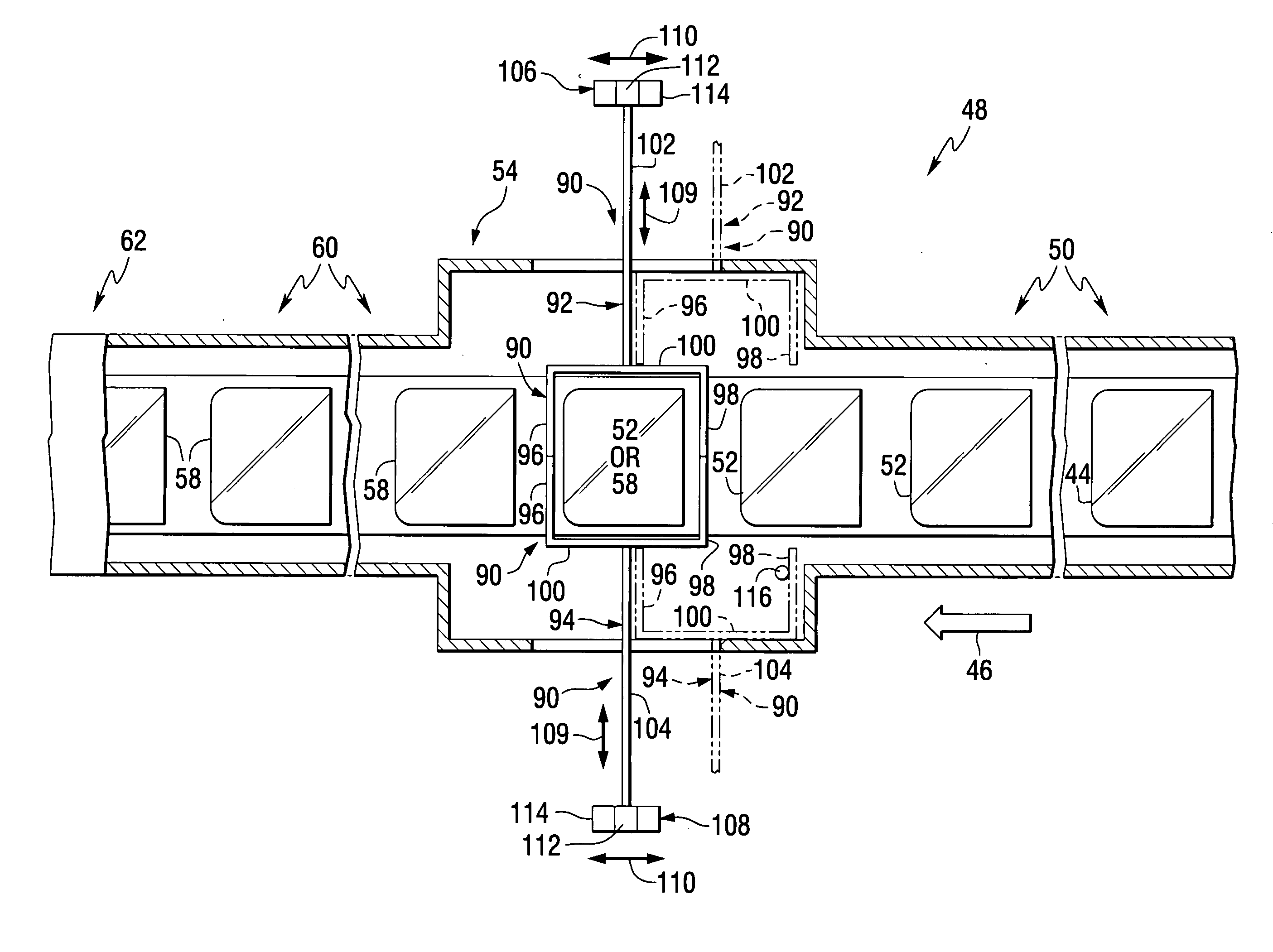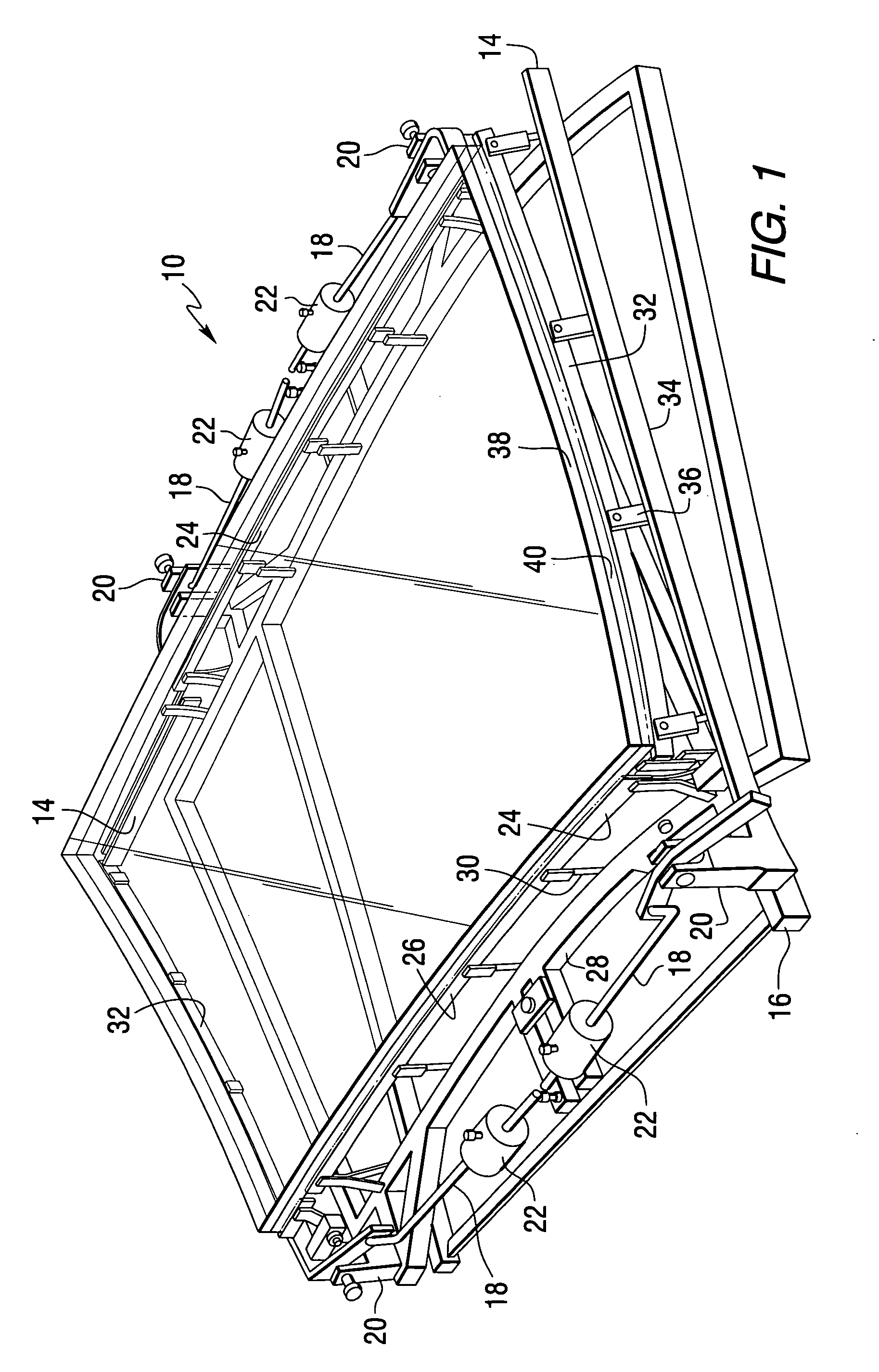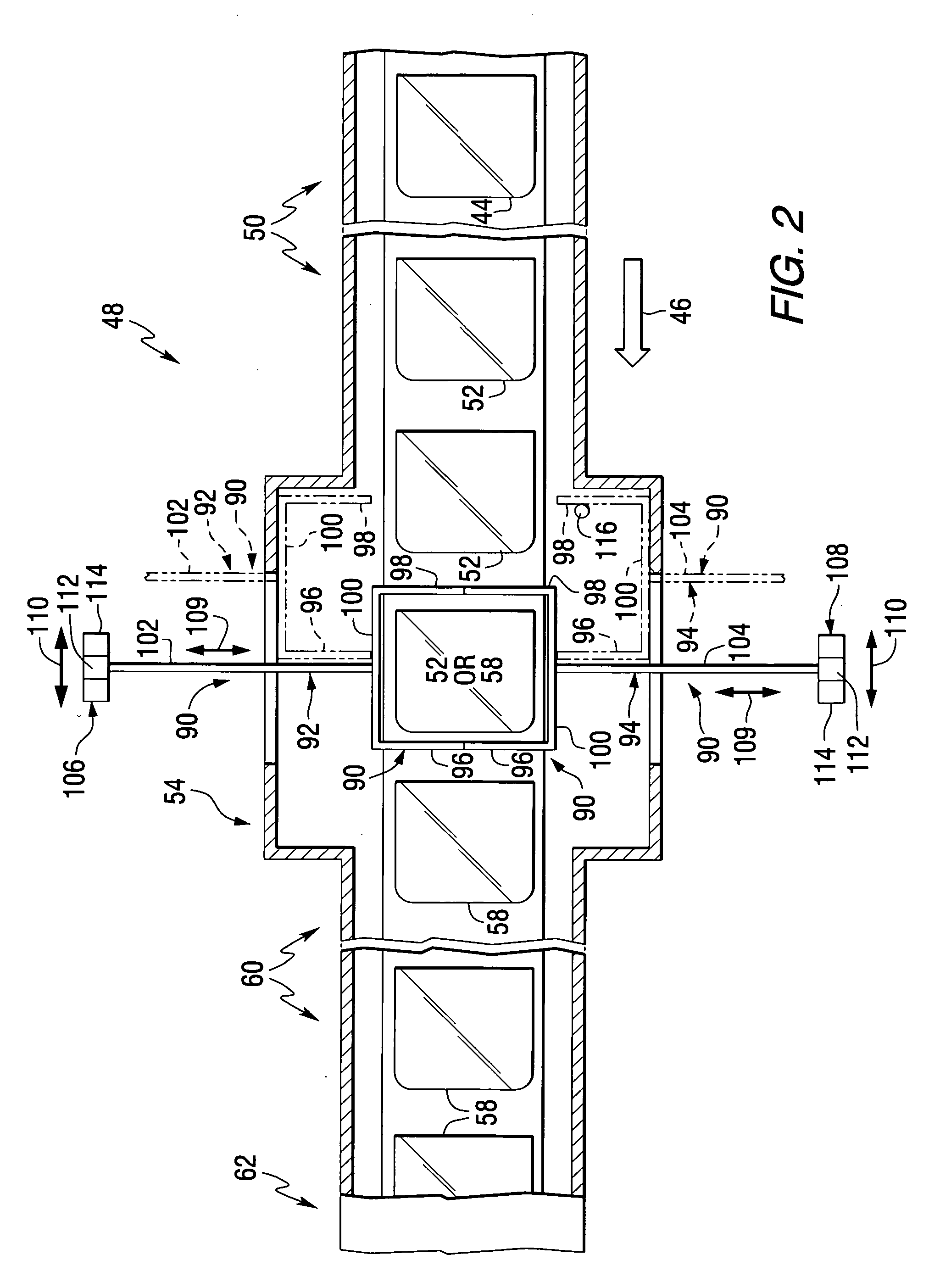Method of and apparatus for strengthening edges of one or more glass sheets
a technology of glass sheets and edges, applied in glass tempering apparatuses, cellulosic plastic layered products, manufacturing tools, etc., can solve the problems of increasing the probability of damaging the edges of laminated glass windows, no satisfactory techniques for cooling the peripheral edges of a pair of shaped glass sheets, outline molds, etc., and achieves the effect of increasing the edge strength
- Summary
- Abstract
- Description
- Claims
- Application Information
AI Technical Summary
Benefits of technology
Problems solved by technology
Method used
Image
Examples
Embodiment Construction
[0021] In the following discussion of nonlimiting embodiments of the invention, heat is extracted or removed from at least the peripheral edges of a pair of shaped glass sheets supported on an outline mold, also referred to as a bending iron, bending mold, or shaping mold, to cool the peripheral and marginal edges of the glass sheets during the end of a shaping cycle or process, and / or the start of an annealing cycle or process, at a faster rate than the central portion of the glass sheets to strengthen at least the peripheral edge portions of the sheets. The shaped glass sheets are subsequently processed, e.g. laminated in any usual manner to manufacture automotive windshields. As will be appreciated, the invention is not limited to the number of sheets that can have their edge portions cooled and strengthened at one time, e.g. but not limiting the invention thereto, the edge portions of one, two, three or more sheets can be cooled and strengthened at one time. Further, the inventi...
PUM
| Property | Measurement | Unit |
|---|---|---|
| temperature | aaaaa | aaaaa |
| distance | aaaaa | aaaaa |
| temperature | aaaaa | aaaaa |
Abstract
Description
Claims
Application Information
 Login to View More
Login to View More - R&D
- Intellectual Property
- Life Sciences
- Materials
- Tech Scout
- Unparalleled Data Quality
- Higher Quality Content
- 60% Fewer Hallucinations
Browse by: Latest US Patents, China's latest patents, Technical Efficacy Thesaurus, Application Domain, Technology Topic, Popular Technical Reports.
© 2025 PatSnap. All rights reserved.Legal|Privacy policy|Modern Slavery Act Transparency Statement|Sitemap|About US| Contact US: help@patsnap.com



